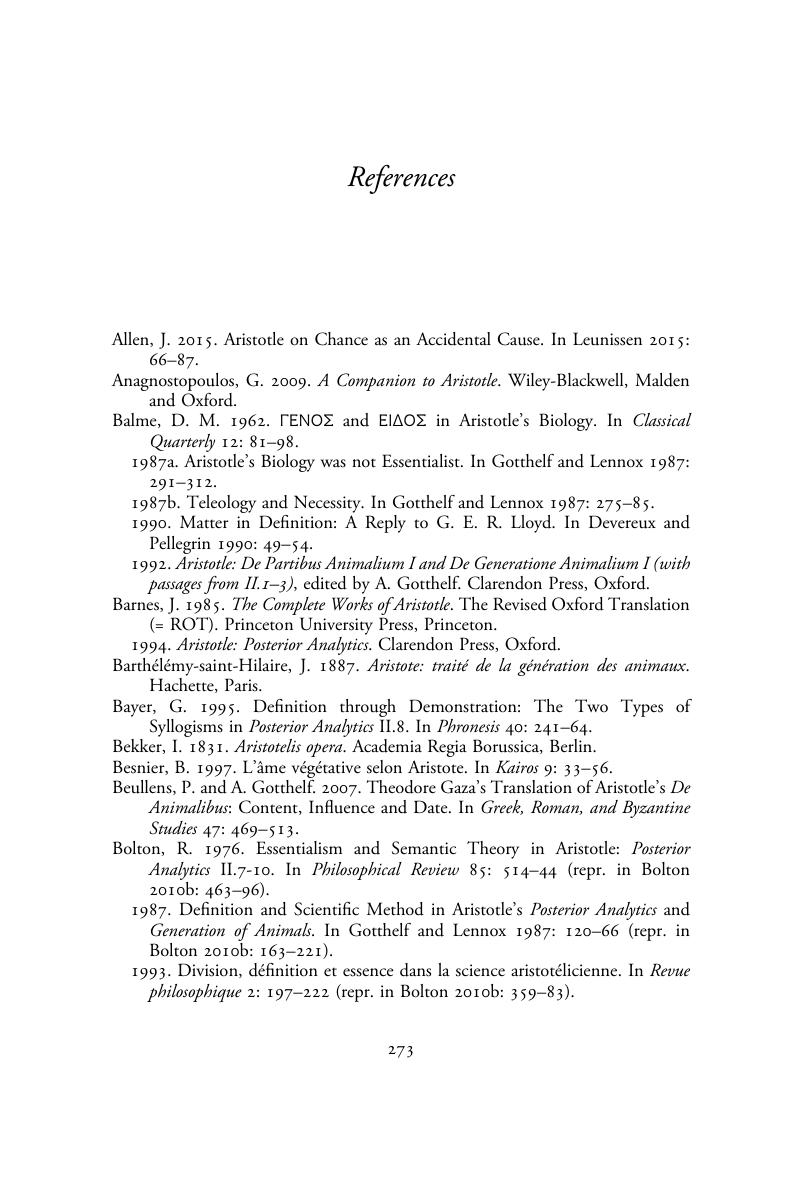Book contents
- Aristotle’s Generation of Animals
- Cambridge Critical Guides
- Aristotle’s Generation of Animals
- Copyright page
- Contents
- Contributors
- Preface
- Abbreviations
- Introduction
- Part I The Unity and Structure of Aristotle’s Generation of Animals
- Part II The Principles of Animal Generation Reconsidered
- Part III Hybrids, Male and Female, Particular Forms, and Monsters
- Part IV Methodology in Aristotle’s Generation of Animals
- References
- General Index
- Index of Passages
- References
References
Published online by Cambridge University Press: 24 November 2017
- Aristotle’s Generation of Animals
- Cambridge Critical Guides
- Aristotle’s Generation of Animals
- Copyright page
- Contents
- Contributors
- Preface
- Abbreviations
- Introduction
- Part I The Unity and Structure of Aristotle’s Generation of Animals
- Part II The Principles of Animal Generation Reconsidered
- Part III Hybrids, Male and Female, Particular Forms, and Monsters
- Part IV Methodology in Aristotle’s Generation of Animals
- References
- General Index
- Index of Passages
- References
Summary

- Type
- Chapter
- Information
- Aristotle's Generation of AnimalsA Critical Guide, pp. 273 - 279Publisher: Cambridge University PressPrint publication year: 2018



